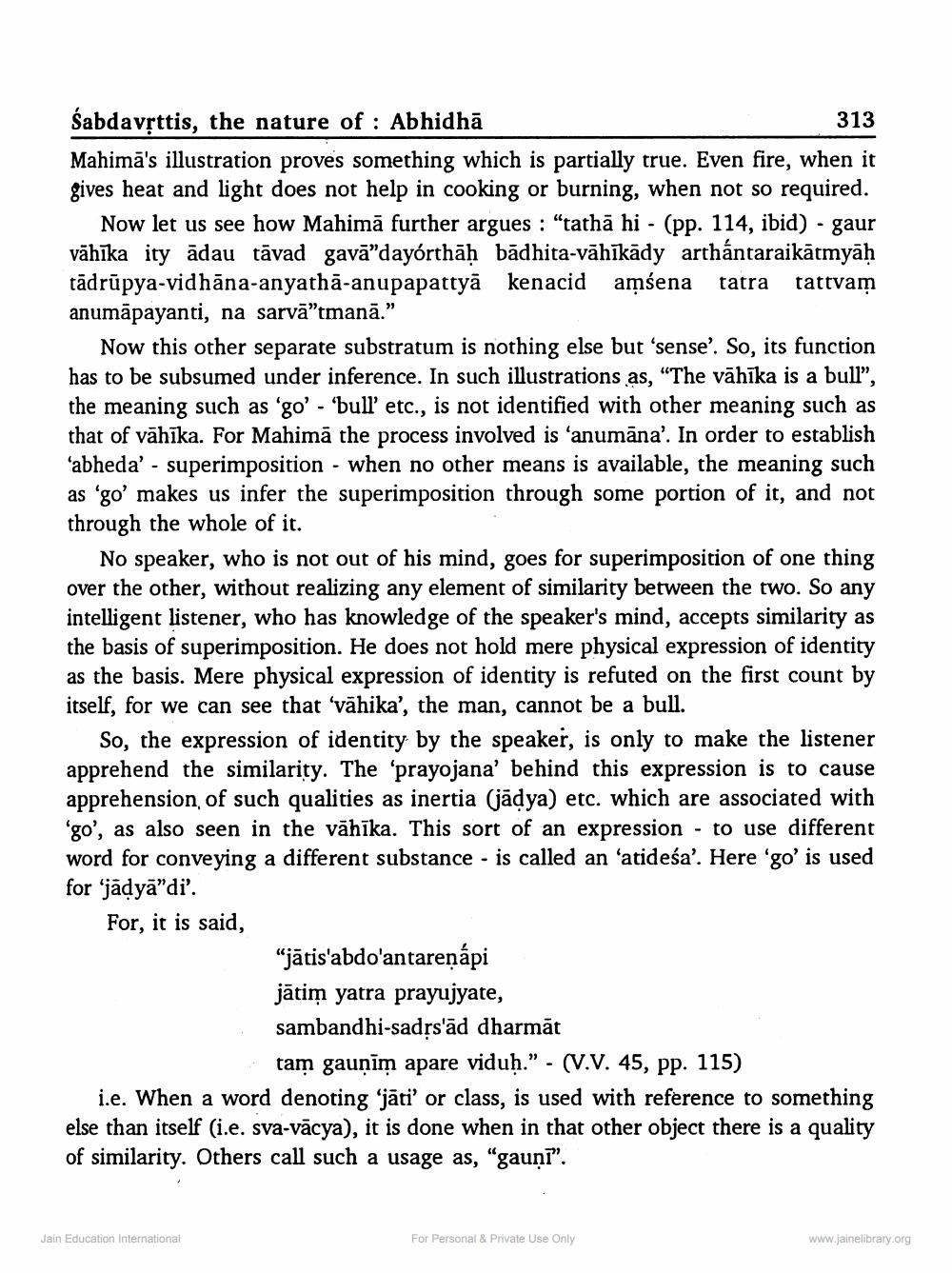________________
Śabdavṛttis, the nature of : Abhidhā
313 himā's illustration proves something which is partially true. Even fire, when it gives heat and light does not help in cooking or burning, when not so required.
Now let us see how Mahimā further argues : "tathā hi - (pp. 114, ibid) - gaur vāhīka ity adau tāvad gavā"dayórthāḥ bādhita-vāhīkādy arthántaraikātmyāḥ tādrūpya-vidhāna-anyathā-anupapattya kenacid amsena tatra tattvam anumāpayanti, na sarvā”tmanā.”
Now this other separate substratum is nothing else but 'sense'. So, its function has to be subsumed under inference. In such illustrations as, “The vāhīka is a bull”, the meaning such as 'go' - 'bull' etc., is not identified with other meaning such as that of vāhīka. For Mahimā the process involved is ‘anumāna'. In order to establish ‘abheda’ - superimposition - when no other means is available, the meaning such as 'go' makes us infer the superimposition through some portion of it, and not through the whole of it.
No speaker, who is not out of his mind, goes for superimposition of one thing over the other, without realizing any element of similarity between the two. So any intelligent listener, who has knowledge of the speaker's mind, accepts similarity as the basis of superimposition. He does not hold mere physical expression of identity as the basis. Mere physical expression of identity is refuted on the first count by itself, for we can see that 'vāhika', the man, cannot be a bull.
So, the expression of identity by the speaker, is only to make the listener apprehend the similarity. The 'prayojana' behind this expression is to cause apprehension of such qualities as inertia (jädya) etc. which are associated with 'go', as also seen in the vāhīka. This sort of an expression - to use different word for conveying a different substance - is called an 'atideśa'. Here 'go' is used for 'jadyā"di'. For, it is said,
“jātis'abdo'antarenápi jātim yatra prayujyate, sambandhi-sadȚs'ād dharmāt
tam gaunīm apare viduh.” - (V.V. 45, pp. 115) i.e. When a word denoting “jāti' or class, is used with reference to something else than itself (i.e. sva-vācya), it is done when in that other object there is a quality of similarity. Others call such a usage as, "gauni".
Jain Education International
For Personal & Private Use Only
www.jainelibrary.org




